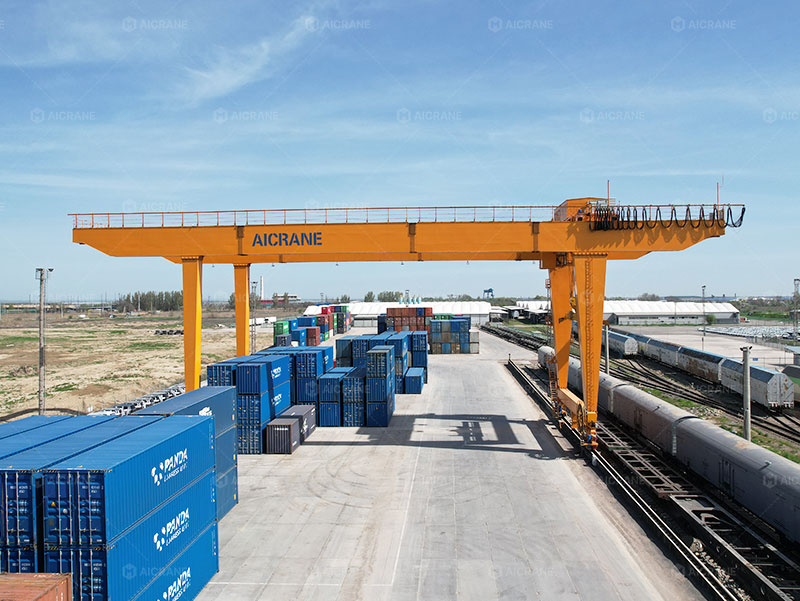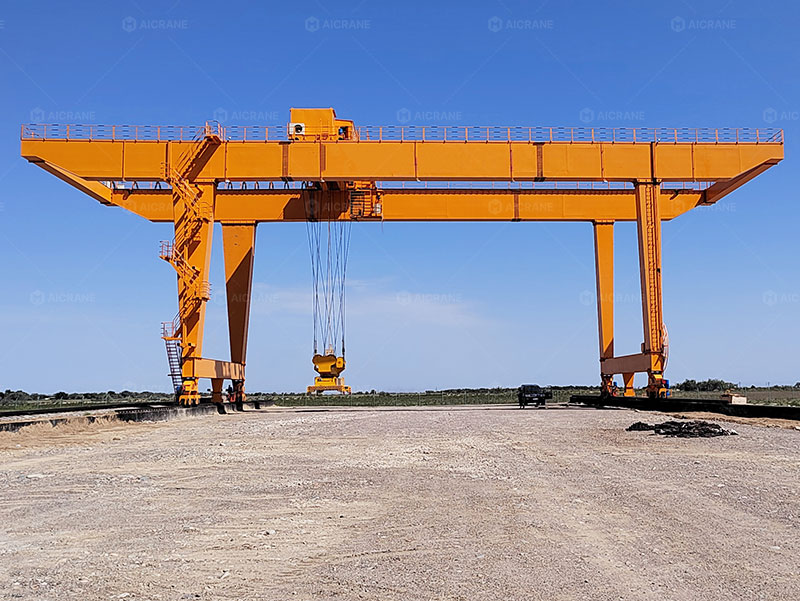In modern container terminals, gantry cranes are the backbone of cargo handling. The growing demand for efficiency, safety, and operational optimization has accelerated the adoption of smart control systems in these cranes. From ship-to-shore (STS) cranes to rail-mounted gantry (RMG) cranes and rubber-tyred gantry (RTG) cranes, the integration of intelligent technologies is transforming how cranes operate. While these systems offer significant benefits, they also have a direct impact on the price of a container gantry crane. Understanding this impact is essential for port operators, logistics companies, and investors who are making procurement decisions.

What Are Smart Control Systems?
Smart control systems encompass a range of technologies designed to enhance automation, operational precision, safety, and monitoring capabilities. Key components include:
-
Advanced sensors: Devices that track position, load, swing, wind, and environmental conditions in real-time.
-
Automated positioning: Technology that assists or fully controls the movement of the gantry crane trolley and spreader to minimize human error.
-
Data integration: Systems that connect cranes with terminal operating systems for task scheduling, performance monitoring, and operational coordination.
-
Remote monitoring and predictive maintenance: Platforms that allow operators to track crane status, detect faults early, and optimize maintenance schedules.
-
Safety enhancements: Collision avoidance, anti-sway systems, soft landing mechanisms, and real-time obstacle detection to improve operational safety.
The combination of these technologies enables cranes to operate more efficiently, safely, and reliably, which is particularly valuable in busy container terminals where precision and uptime are critical.
Factors Driving Crane Price Increase
Implementing smart control systems increases the upfront cost of a gantry crane in several ways:
1. Hardware Costs
Smart control systems rely on advanced hardware, including sensors, cameras, LIDAR, GPS modules, and industrial computers. These components are more expensive than traditional crane hardware. Additionally, integrating these devices into the crane’s existing electrical and mechanical systems requires extra cabling, protective enclosures, and calibration processes.
2. Software and Control Systems
Modern smart cranes use sophisticated software and programmable logic controllers (PLCs) to manage automation functions. The software development, licensing, and integration with terminal operating systems add significant cost. Customizing software to meet the specific operational requirements of a terminal further increases the container gantry crane price.
3. Installation and Integration
Smart systems demand more complex installation procedures. Sensors and automation components must be carefully calibrated and tested to ensure accuracy and reliability. Integration with terminal systems requires specialized technicians and often extends the installation timeline, resulting in higher labor costs.
4. Maintenance and Support
Although smart systems can reduce downtime and improve operational efficiency, they require specialized maintenance. Advanced sensors and control systems are sensitive to environmental factors and may need periodic calibration. Maintenance contracts for smart cranes are typically more expensive than for conventional cranes.

Economic Benefits Offsetting Price Increases
Despite higher upfront costs, smart control systems provide substantial value that can justify the price premium.
1. Increased Operational Efficiency
Automated positioning, load monitoring, and predictive maintenance help cranes operate at optimal speed and precision. This reduces idle time and improves throughput, enabling terminals to handle more containers per hour. Over time, the increased productivity can offset the higher initial investment.
2. Enhanced Safety
Smart systems minimize human error and prevent accidents, which can be extremely costly in port operations. Fewer accidents translate into lower insurance premiums, reduced equipment damage, and a safer working environment, all contributing to long-term cost savings.
3. Reduced Lifecycle Costs
Smart cranes often have longer service lives and lower unplanned maintenance costs due to real-time monitoring and predictive maintenance. While the initial investment is higher, the total cost of ownership over 10–20 years can be lower than that of conventional cranes.
4. Better Resource Utilization
Integration with terminal management systems allows operators to deploy cranes more efficiently, reducing fuel consumption, electricity usage, and labor costs. This can have a significant impact on operational expenditure, particularly in high-volume ports.
Pricing Trends
The price impact of smart control systems varies depending on crane type, size, and automation level:
-
Semi-automated systems may increase the price by 10–20% compared to a conventional crane.
-
Fully automated rail mounted gantry cranes can add 25–50% or more to the base price due to high-end sensors, control systems, and software integration.
-
Retrofitting existing cranes with smart systems is often more expensive per unit of capacity than purchasing a new smart crane, because the integration process can be complex.
The price is also influenced by additional factors, such as local labor costs, supplier expertise, and terminal-specific customization requirements.
Considerations for Buyers
When evaluating the cost of smart control systems, buyers should consider:
-
Operational volume and complexity: High-traffic ports benefit more from automation.
-
Long-term savings versus upfront cost: Analyze total cost of ownership, including maintenance, downtime reduction, and labor savings.
-
Scalability and upgradeability: Ensure that the smart system can accommodate future upgrades or integration with emerging technologies.
-
Supplier expertise: Experienced manufacturers with proven smart crane technology may charge more but offer higher reliability and support.
Balancing these factors helps buyers make informed decisions and choose cranes that deliver the best combination of price, performance, and future-proofing.
Conclusion
Smart control systems are redefining the landscape of container gantry crane operations. While they increase the upfront price of gantry cranes due to advanced hardware, software, and integration requirements, the benefits in efficiency, safety, and lifecycle cost often outweigh the additional expense. In high-volume container terminals, smart cranes can provide measurable gains in productivity and operational safety, making the investment worthwhile.
As ports increasingly adopt digital transformation strategies, the demand for smart, automated cranes is expected to grow, pushing the industry toward more intelligent, connected, and cost-effective solutions. For terminal operators, understanding the trade-off between initial price and long-term value is essential to making the right investment in next-generation container gantry cranes.